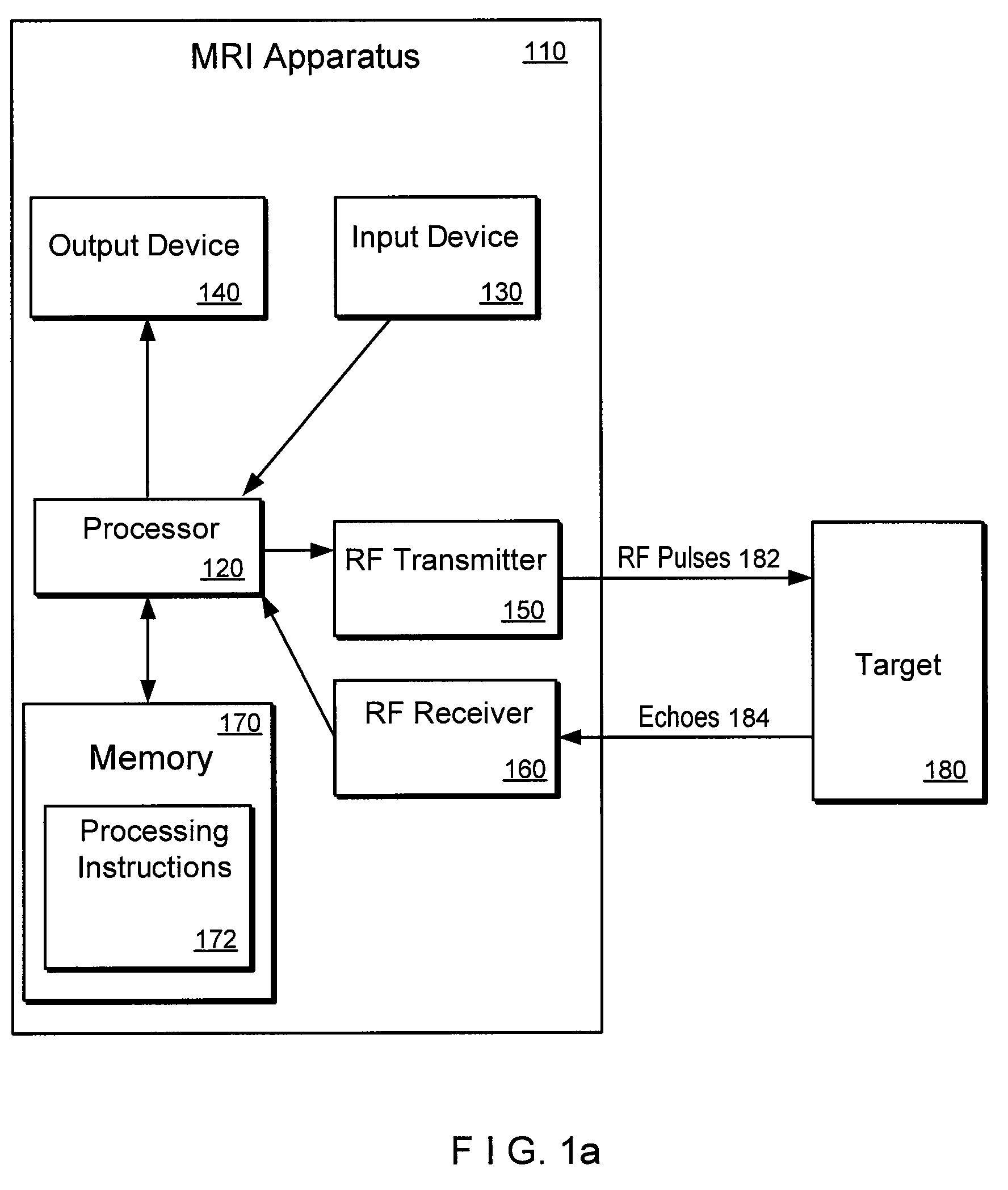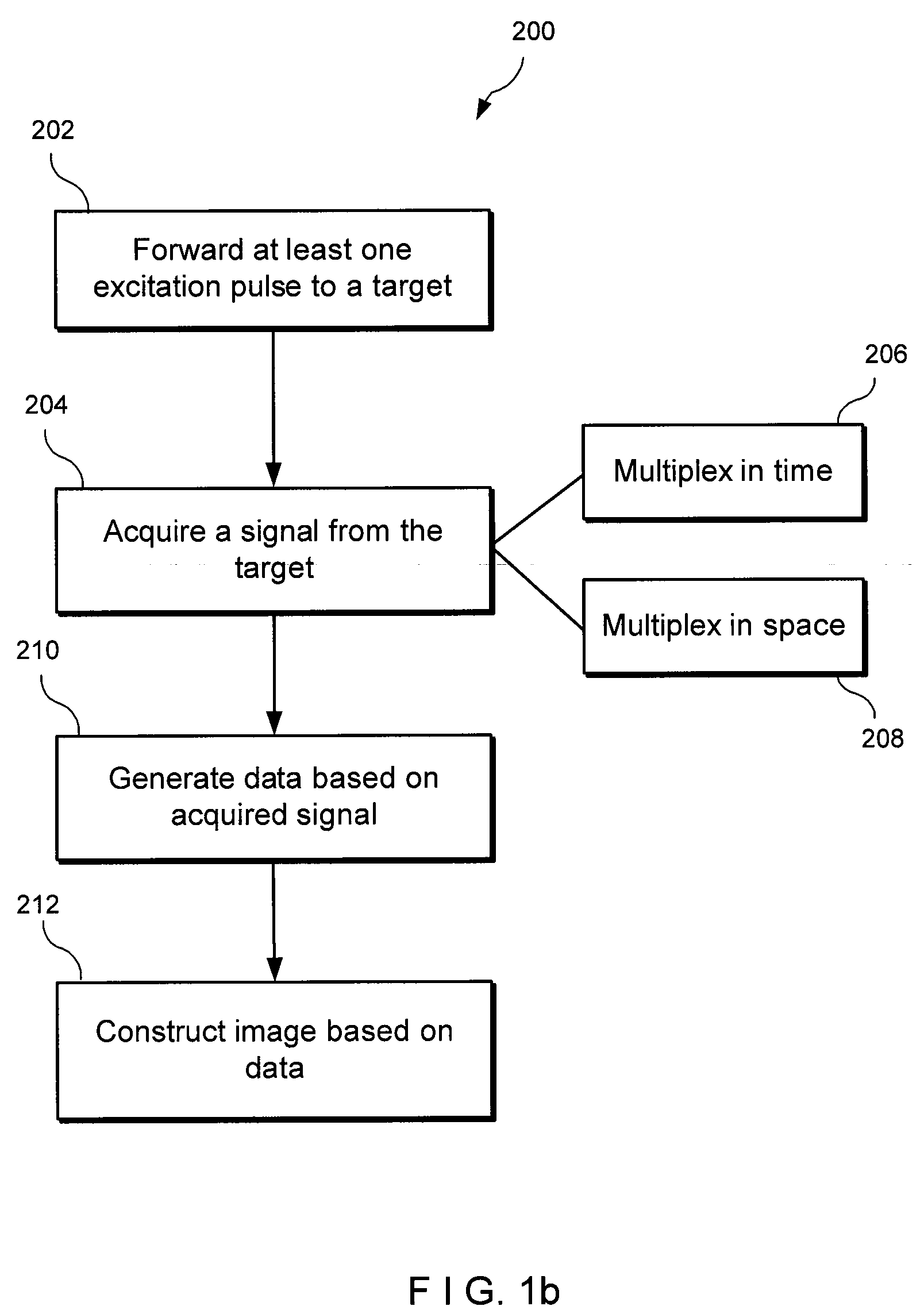System, method and computer accessible medium for magnetic resonance spectrocopic imaging
a magnetic resonance spectroscopic imaging and computer accessible technology, applied in the field can solve the problems of csd, unable to achieve meaningful gradient increases, and inferior signal-to-noise ratio per unit time of mrs compared with mri, so as to optimize the duty cycle of magnetic resonance spectroscopic imaging and reduce chemical-shift artifacts. , the effect of improving the signal-to-noise ratio
- Summary
- Abstract
- Description
- Claims
- Application Information
AI Technical Summary
Benefits of technology
Problems solved by technology
Method used
Image
Examples
Embodiment Construction
[0015]To address at least some of the deficiencies described above, exemplary embodiments of systems and methods for MRSI for improving signal-to-noise ratio per unit time and optimizing duty cycle in magnetic resonance spectroscopic imaging and / or for reducing chemical-shift artifacts at high magnetic fields can be provided.
[0016]In exemplary embodiments of the present invention, optimal SNR and acquisition efficiency may be achieved simultaneously by multiplexing several slabs of several slices in space and time in MRSI. This exemplary embodiment can utilize the advantages of obtaining information from a maximum number of voxels, each at an optimal signal-to-noise ratio (“SNR”) per unit time, in magnetic resonance spectroscopic imaging (“MRSI”). Conventional maximum acquisition duty-cycle may be obtained by multiplexing in time several single-slices for each repetition time (“TR”), while optimal SNR can be achieved by encoding the entire volume-of-interest (“VOI”) for each TR. For...
PUM
 Login to View More
Login to View More Abstract
Description
Claims
Application Information
 Login to View More
Login to View More - R&D
- Intellectual Property
- Life Sciences
- Materials
- Tech Scout
- Unparalleled Data Quality
- Higher Quality Content
- 60% Fewer Hallucinations
Browse by: Latest US Patents, China's latest patents, Technical Efficacy Thesaurus, Application Domain, Technology Topic, Popular Technical Reports.
© 2025 PatSnap. All rights reserved.Legal|Privacy policy|Modern Slavery Act Transparency Statement|Sitemap|About US| Contact US: help@patsnap.com



